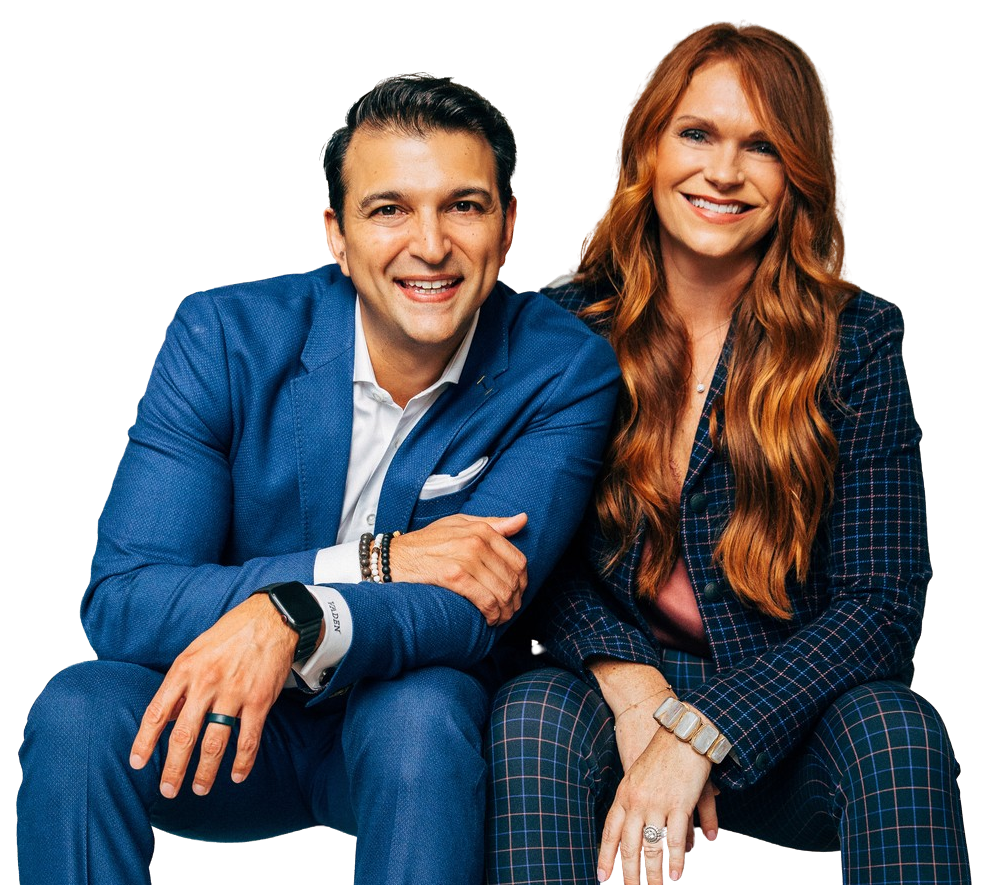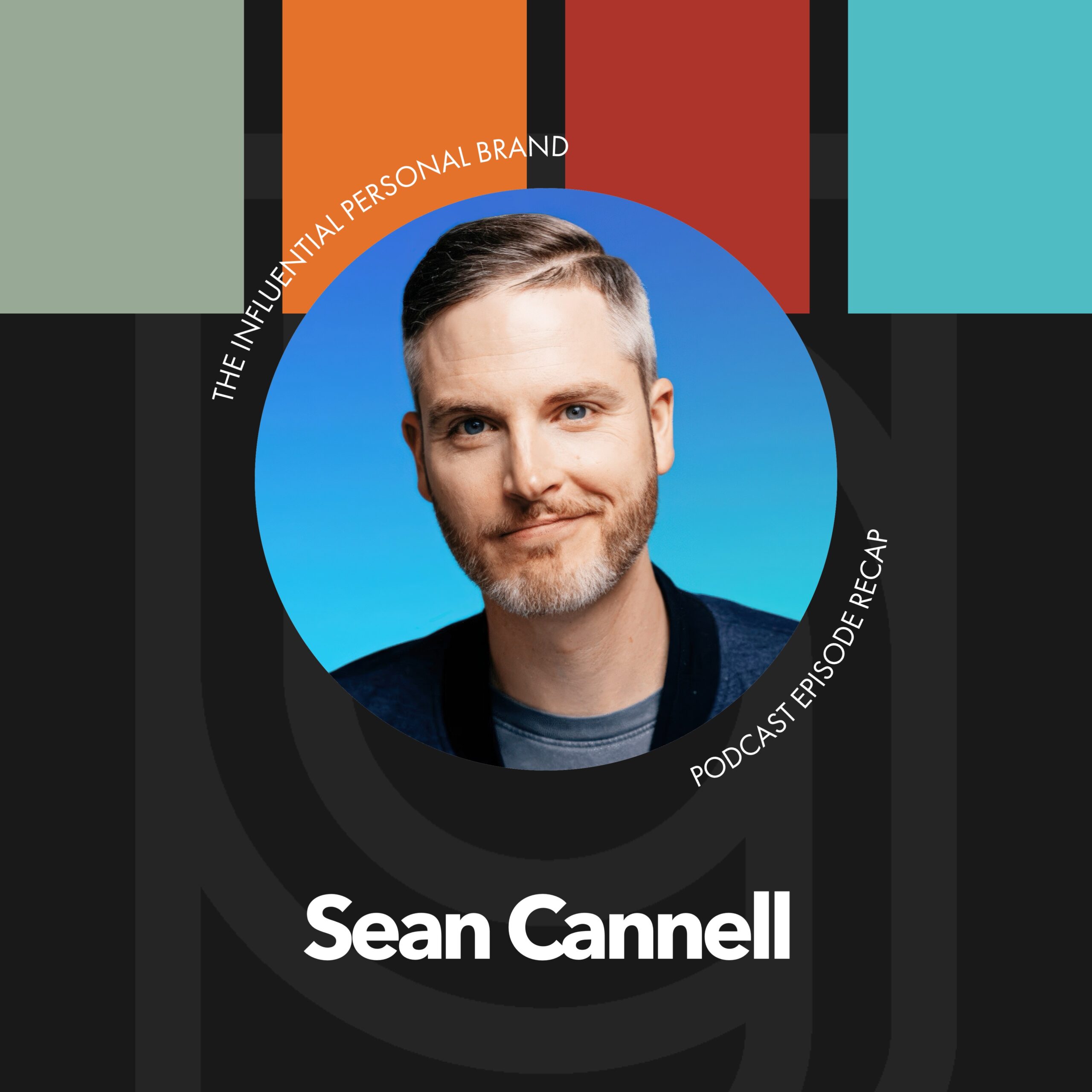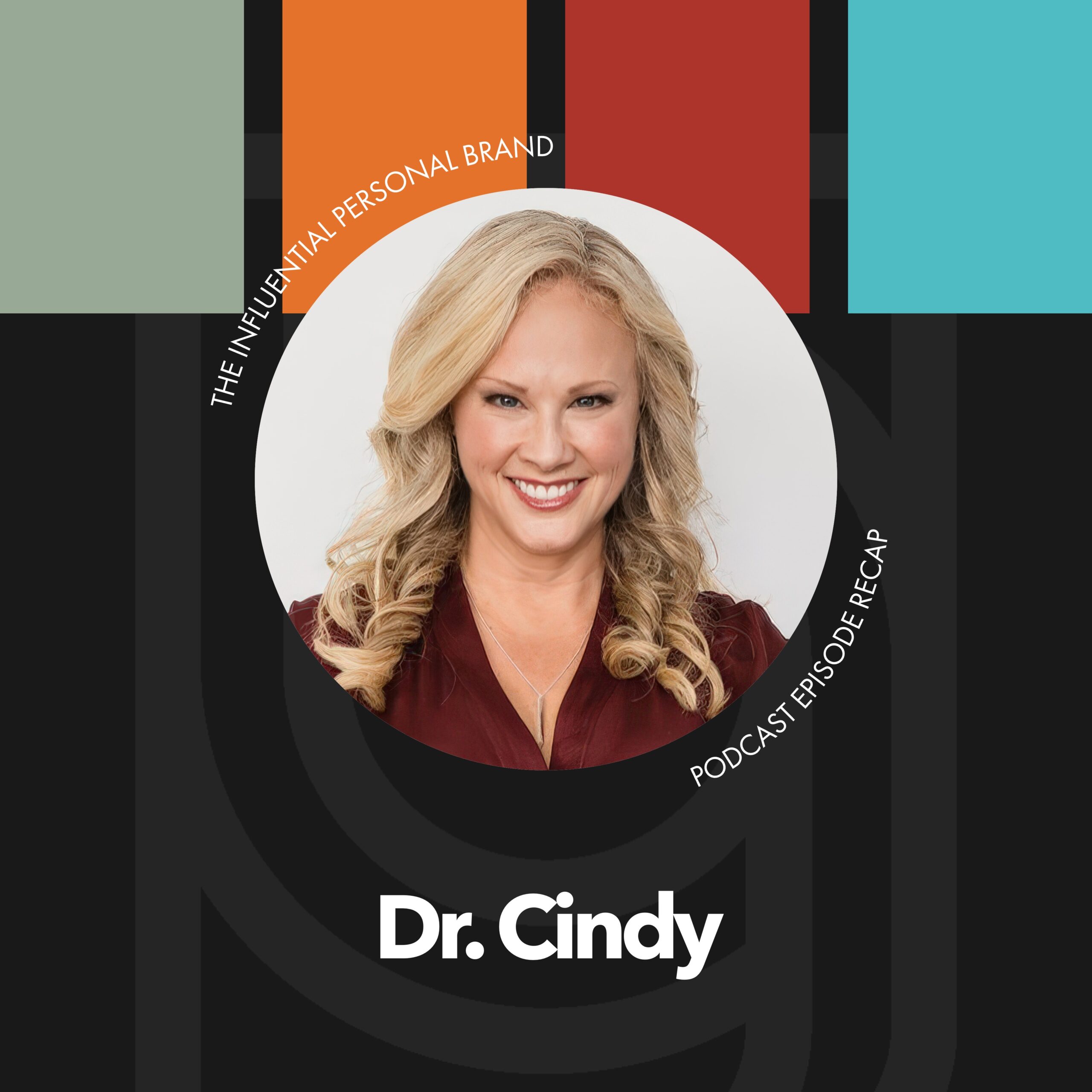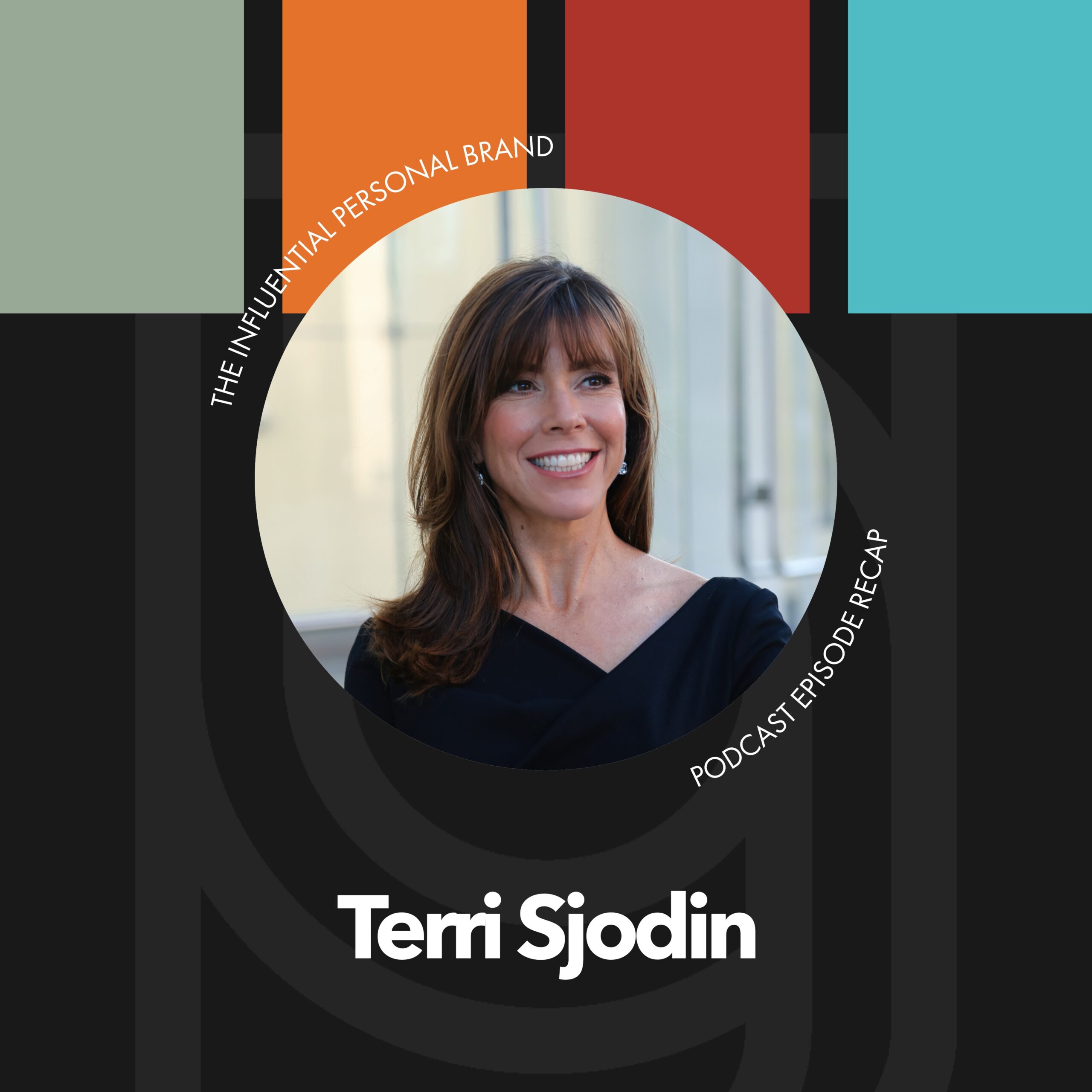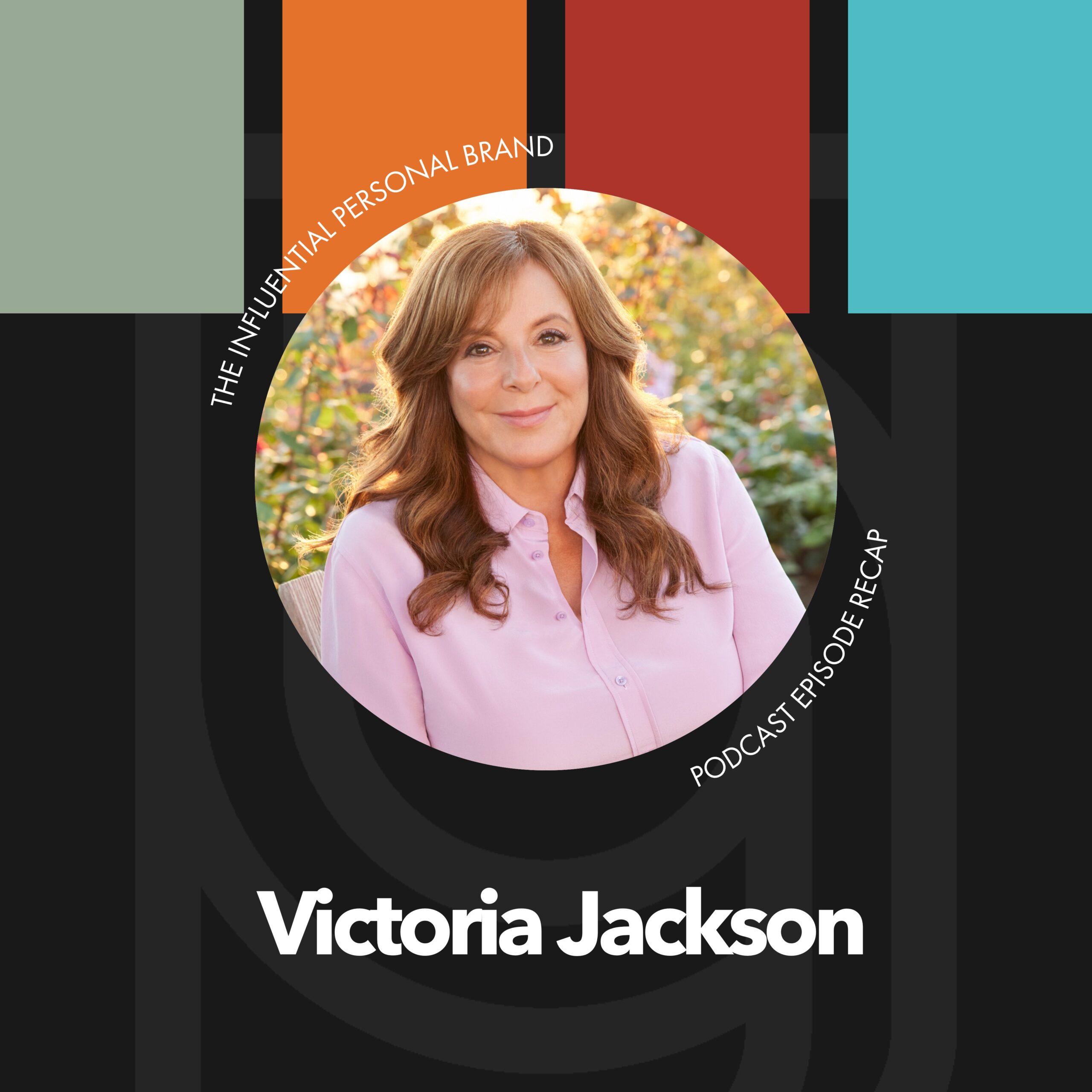RV (00:02):
Brendan Kane was this week’s appearance guest on the influential personal brand podcast right now, myself and our CEO, Amanda Johns Vaden are going to be breaking down this interview. Which was, whoa. It was awesome. This, I loved it. This is one of, probably the most where I, like I learned the most personally AJ so anyways,
AJV (00:30):
Heavy content episode where you will undoubtedly, no matter what level you’re at, learn something, it is really good.
RV (00:38):
Yeah, totally. And it, it, there was like a few things that it changed my mind on. And then there was some things that were, that were very different than I expected. And I guess I’ll start, I’ll start with that. So, so my first takeaway was like really early on where I was like, I was kind of joking with him, like, yeah. So how do you hit 1 million followers, which he has, which you know, is kind of the premise of his first book was how he did it. And I was, I, I, you know, I was kind of saying it tongue in cheek, like, yeah, what’s the secret. And he just very like approached it very systematically. He’s like, yes, there are four ways to hit 1 million followers and, and, and just started like rattling through them. And I was like, whoa. And so, you know, one is organic and algorithms and playing that game, which is why I think what most people think of.
RV (01:26):
And the thing about that, that I loved that he just nailed was he was like, look, it is, there is not any sort of slant or favoritism or politicalness to the content. There’s no way they could keep up with all of the content creators in the world of what they’re saying. He said it is completely objective. It’s completely democratized based on one thing. Does your content keep people watching? Yes or no? That’s it like, it is a very straightforward, fair metric whether you like it or not, doesn’t matter, but it’s like, does your content hold people’s attention? Yes or no. If yes, it will get shown to more people. If no, it will not get shown to more people. And that was, that was really like good to hear. But then he also said giveaways, giveaways are a huge way that people get lots of followers.
RV (02:25):
Now. They often get, you know, the, the question is, do you get the right followers? And people will unfollow, but giveaways work and you don’t, we haven’t heard anybody really talk about the power of doing giveaways on social and then influencers and doing trade for share for share, like you do a post for me, I do a post for you. And then pay paid, but specifically with paid. And this is the thing that I want to highlight was, you know, we’ve been, we’re really set, been setting the stage to some paid campaigns, but he said specifically for followers, I would not run paid ads. If the goal is to get more followers, he was saying, I would do promoted posts. And I would pay me my accounts to do a post that’s, how you’ll get the most followers is by being tagged in someone else’s posts, which is like, duh, that’s true. Like we know that organically, but, but don’t think of that as like basically a brand deal, like go pay people with lots of followers to tag you in their posts. Like that’s a much smarter way to go about doing it. So anyways, that was, that’s all I know, that’s a lot, but that was those, those were good things and hit me
AJV (03:39):
Hard. It was that all one takeaway.
RV (03:42):
That was all one takeaway. That was, that was one fun four-part takeaway.
AJV (03:48):
So yeah, it was my first one was very similar to that and it was kind of around that question. It’s like, you know, how would you grow your following? Right. And I think you asked that in the very beginning. And it’s like, if I had money at all, I would be using it to build growth. But building your audience is a longterm play. Right. And so it’s like, you gotta be doing it in a few different ways. And so the kind of thing that I highlighted was harnessing the traffic of a different source, right. It’s go where the traffic is. And if your platform doesn’t have the traffic, then how do you get your content on a platform? That’s got a lot of traffic. Right. And I think there’s just a lot to that. And I think the one thing that came up to my mind and all of these different interviews is I’ve kind of been adverse to like getting on Tik TOK because it’s not for me.
AJV (04:36):
But that’s where tons of our customers and consumers are. And Roy’s like, they, we got to get them ticked off. I’m like, you get on ticked up, but it’s kinda like one of those things, it’s like where you’ve got to go where the traffic is and the traffic is on tick-tock. So it was like, then how do you use that to harness all of these different things? And so I think that was like the big one for me. It’s not just go to the platform that you prefer to consume content, which is something we just picked up from the Jasmine star episode. She go check it out. But it’s like have a preferred platform in which you create and you need to create where your customers are. So where are the customers? Where is the traffic? And I just, you know, it’s like, tick-tock just you know, labs YouTube for most time spent on any platform. And it’s like, kind of undeniable, it’s no longer should I it’s like, well, you need to, but it’s in an effort to grow your following. And so I thought that was really good and it just connected a few dots for me. So that would be my first one. It says, you just have to go where the traffic is.
RV (05:36):
Yeah. And that was, that was my second takeaway was, was just talking about that, which is we, you know, in our high traffic strategies event, we teach it that’s the kind of the central premise of the whole event is find an existing audience and figure out how to get in front of them. But, you know, here he was referring to it as like content distribution, which is a little different from going, okay, search engine optimization is like, there’s people searching this. I want to get in front of them versus he’s, he’s kind of going, yeah, just get your content distributed to somebody who has an audience. And I’ll tell you one of the things that our team immediately did after this episode or after the, you know, the interview was we immediately started researching meme accounts on Instagram. So for our topical areas, we immediately started going, okay, we gotta go, we need to go identify.
RV (06:30):
And just so you know, if you’re, if you haven’t listened to the episode, a meme account is an account that is it’s themed. So it’s not like a person’s account, like a Rory Vaden or an AIG Vaden. It’s not a company account, like a brand builders group. It’s like, you know well, like the one that came up a couple of times was the good quote and that’s a huge account. It’s got millions of followers and it’s, it’s all just like inspirational quotes. And then, you know, you can pay up a truckload of money and they’ll, you know, for certain people they’ll do, they’ll do promoters partial posts, but basically it’s is the, you know, do you know, do you know what those accounts are? And those accounts exist for the purpose of doing what we’re talking about here. Like that is their business model is to find great content and build an audience around it so that people who are interested in that topic will come and pay them to do those posts. And just like in my mind, that was just a big, giant disconnect and just got super clear and went immediate into action mode. So that was my second takeaway. I’d say, what was your second one?
AJV (07:40):
My mind was the content itself and asking yourself is your content holding someone’s attention? Because at the end of the day, that’s the only care of the platform is can you keep people on the platform? So if you want to win, it’s like, are people staying in tune with your content? Is your content holding attention? And then I love this. Cause I thought he shared some really amazing like little stats. He said one of the big ahas we had with the 28 seconds of content versus the 21 second hold. And if that’s like a very, like, you’re talking about seven seconds, right? And this isn’t like three minutes or five, no seven seconds. And attention span of like, how do you go from this to this? And if you can’t keep people’s attention for 21 seconds, you will lose. And so to that, I go, wow, that’s really amazing.
AJV (08:31):
And like, and I thought to myself, it’s like, how much content can you really teach in 21 or 28 seconds? And the answer to that is like none, pretty much none, but you can tell a really good, quick story. And I think those are like those kind of like, what are you doing in those first? Let’s just call it 30 seconds to get someone latched, to get someone hooked. And I love, he said, it’s not about super high production. It’s not about like tons and tons of content. In fact, the content doesn’t even have to be that great, but it’s got to have an emotional tug, right. You’ve got to be pulling up those heartstrings. So it needs to have a good story and it needs to be something that can suck someone in really, really quickly. And so it’s like, how are you starting all of your videos?
AJV (09:15):
And that’s like, I know for a while, we’ve since done away with this, but it’s like, we had all these like bumpers that were seven seconds. And I was like, gosh, we probably were losing tens of people for it. I get to the end of the bumper. And so it’s just to me, it’s coming, going back in, it’s not about high production value. It’s about the realness. It’s about the stories. And then he talks about a couple of different accounts to go and follow. One of them, he said was the Dodo. But then I actually thought about Jay Shetty’s Instagram accounts because Jay Shetty’s Instagram account is like every single time I watch one of those little videos he shares. I’m like heart love, like so good. So funny. But here’s the thing it’s like, he didn’t produce probably 90% of those, right.
AJV (09:53):
That’s already existing found content, but it’s like, I love that account because they’re all inspirational motivational, like heart tug stories. And they’re really short and they’re quick someone who hasn’t seen a loved one in like 21 months for, because of COVID or, you know, a dad coming home from, you know, overseas and surprising his kids at graduation. And it’s like, I love all of them. And I thought, well, movies. And like, when I listened to this, that was what dawned on me. It’s like, you don’t even have to be the creator of a lot of really good content to build your following, but you need to be a curator of really good content. So there’s some that’s created and there’s some that’s curated. How can you make a combo of both?
RV (10:34):
Yeah. That, and that that case study he was using was a, I think it was from Alex stamp where he said one video got 90 million views. The other got 5 million views. And the difference was a seven second watch time. So it’s like that even making an incremental improvement in the watch time of seven seconds can be the difference between 5 million views and 90 million views. And and that, you know, this was my third takeaway too. I mean, just moving people emotionally, it’s gotta be what moves your audience emotionally? Like, it’s that inspiring? Or, you know, and even the angry stuff. I mean, like, I don’t know that you want to like do stuff that makes people angry. But if you, if you think about it, it’s like, why does the very political content get, get so much reach on social media? It’s not because the platforms are going, yeah, let’s put this political content in front of people.
RV (11:39):
It’s saying people are engaging with this. They’re reacting to it. They’re responding to it. So the things that activate our human emotions, the things that make us laugh, the things that make us cry, the things that make us mad, the things that, that make us sad, the things that make us inspired or ambitious, like those are the things that people watch and they watch it all the way through and they share it and they comment on it and they engage with it. And so you got to find a way to make your content more emotional. It’s gotta be more, more captivating and just understanding the kind of funded, you know, fundamental things. And like, you know, you’ve mentioned the word AAJ. It’s like, if you don’t know how to do that on purpose, just tell a story, like stories inherently keep us hooked because we want to know how the, how the story ends. So just really, really good stuff. And, and you know, you, you also said this, like, it’s not the quality of the production that matters. It’s just the quality of the storytelling. That’s, that’s, that’s the part. So I loved, I loved it. So what was it? The third
AJV (12:47):
Oh, mine are mine is, is kind of like the summary of like the three things to be asking yourself, which I thought were just really simple and powerful. It’s like one, how are you stopping the scroll? So what are you doing to make someone go? I need to watch that. I need to read that. I need to look at that. So question number one, how are you stopping the scroll question? Number two, how are you holding their attention? Right. So what is it that’s going to pull those heartstrings and suck them in. We’re not going to start to see what happens here, right? So what are you doing to stop the scroll? What are you doing to hold their attention? And then how are you going to monetize that attention? Right? So if this is a part of your business, it’s like, what is the next step? Right. So it’s like, is the next step, just a follow me? Is it subscribed to something? But it’s like, how are you using that to grow your audience and to monetize your business? So just again, it’s like, how are you going to stop the scroll? How are you going to keep their attention? And then how are you going to monetize it?
RV (13:52):
Simple stuff, simple stuff. But it works really, really, really powerful interview. I was totally impressed with, with Brendan. And he clearly lives in the world all day, every day,
AJV (14:04):
Very content rich. It’s really, really good with, I think really actionable, like, okay, that’s what you do. That’s how much you spend. And then also some really good, quick case studies that really back it up. It was really good.
RV (14:17):
Love it. I love it. So go listen to it. Listen to all the episodes, dang it. They’re all really good and listen to it for a long time and then share them with everyone, you know, and be like this At least 30 seconds, 27 seconds worth. It’d be like this podcast is amazing. So we are grateful for you. We love doing the show. We love reading your comments over on iTunes and seeing all the testimonials and stuff. So make sure you drop us one of those, if you haven’t yet. And keep coming back, come back next week. And we’re going to be talking about Jeff Goins and being an amazing writer and finding your, your, your brilliant idea. So we’ll catch you soon. Bye bye.

